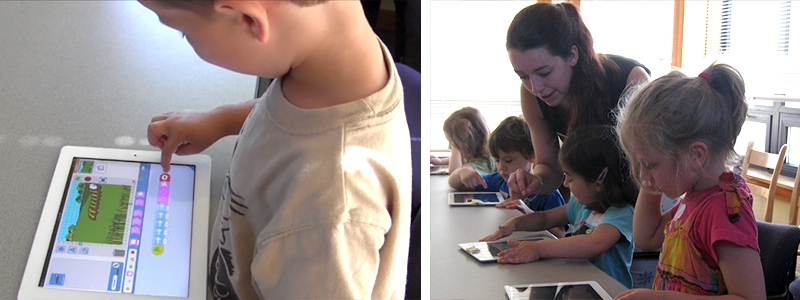Problem: The project, led by computer scientist Mitch Resnick's Lifelong Kindergarten group, part of the Media Lab at MIT, began in 2007. The platform uses the logic of Lego toys to teach children to create their own games. The goal is not to develop junior programmers, but to allow students that have learnt to program to use this knowledge to learn other content and skills in an engaging and creative way.

Solutions: The tool uses colored information blocks that fit together, just like Lego. As the child chooses and orders actions, colors and sounds, his or her commands take the form of shape, color and movement, creating games, interactive stories, cards and animations. The software also works as a social network. When the programming is done, the child can share his or her creation with the online community, receive feedback and support to help the project grow. The tool is free to use.
Outcomes: The use of the tool helps to develop skills such as creative thinking, systematic reflection, collaborative work, problem solving, project design and communication of ideas. Nearly seven million projects have been published within the platform. The site is available in over 40 languages. About 7,500 educators from around the world participate in a community to discuss the use of software with their students.
Many educators around the world are already using the platform. One example of this is the "Pequeños Programadores" (“Little Programmers”) project, which began in November 2014 in Venezuela, and is coordinated by Camila Magrane, a teacher. Programming classes are given to students in the fourth and fifth grade of elementary school, focusing on game development. The goal is to introduce the learning of programming language into Venezuela’s education system. The project is in the testing phase at the Generalissimo Francisco de Miranda public school in Caracas. The curriculum includes exercises and activities that have been used in other countries such as Colombia and Uruguay. One activity asks students to draw and animate a natural or urban landscape with at least four elements, such as people, cars, trees and animals. Scratch allows kids to transform this static landscape into an animated image. In another class, students learn to create a two-level game, which includes moving a bat around the screen, eating animals such as crickets and spiders, and passing through obstacles. Students need to use variables, expressions and logical comparisons to develop the game.





